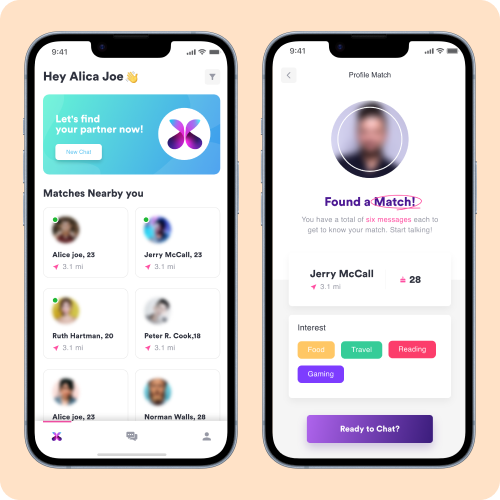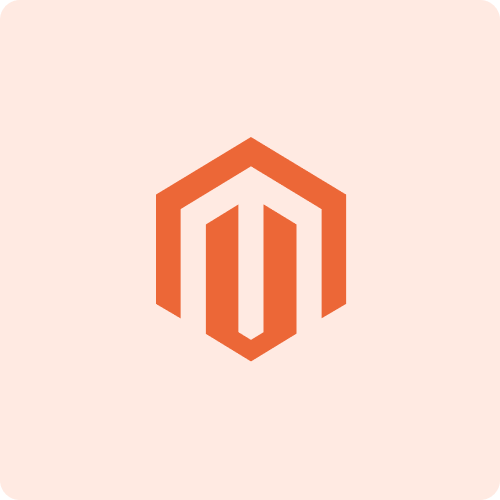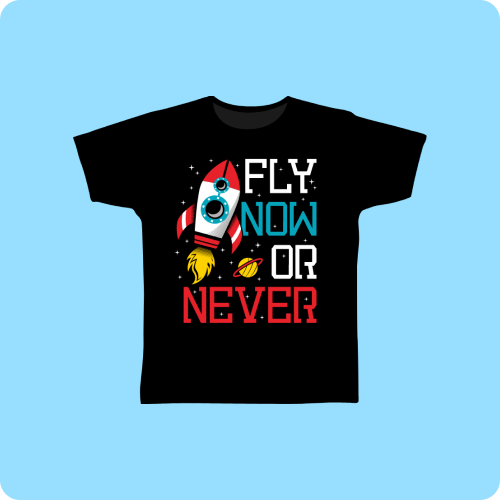The fitness industry is one of the most promising sectors for business owners and fitness entrepreneurs today. In 2023, the fitness app development market was valued at USD 8.99 billion and is expected to grow at a compound annual growth rate (CAGR) of 29.84%. In 2030, it is supposed to reach the level of USD 120.37 billion.
Fitness apps have revolutionized wellness from a buzzword to an action plan—not just counting steps or workouts, but personalized experiences that cater to the needs and preferences of each individual. This personalization is ideal for businesses targeting health-conscious customers who are passionate about using technology to achieve their fitness goals.
Fitness app creation is no longer just part of the ongoing trends, but a carefully thought-out strategic move for those wanting to make a lasting impact in the health and fitness industry.
Developing a fitness app encompasses more than just building digital wellness solutions. In this blog, we explore the future of fitness app development and how it contributes to the shaping of the fitness domain.
Fitness App Development Statistics
An outstanding 64% of Americans choose wellness and fitness over any other pastime. 87% of individuals reported maintaining or increasing their well-being spending in 2022, according to Mindbody’s 2023 Wellness Index.
So, what is all of this spending on? The answer is Health and Fitness Apps!
Seeing the increased demand for fitness apps, more and more businesses are turning toward fitness app development, heavily laden with technology, to help the users achieve health goals.
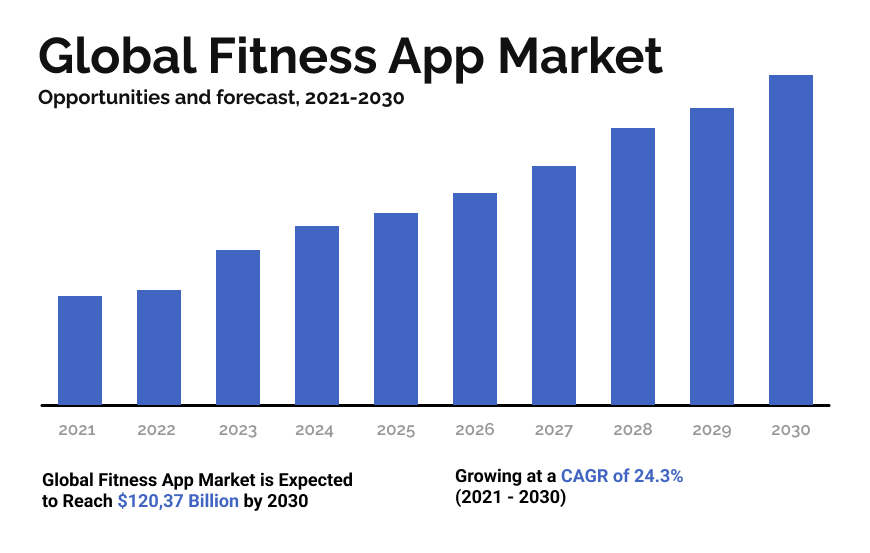
Health and Fitness Apps are booming! Here are some promising stats for 2024:
- Market size: expected to reach $6.86 billion by the end of 2024.
- Growth rate: projected to grow at a CAGR of 9.99% from 2024 to 2028.
- Contributing factors: increasing focus on wellness, smartphone use, and the persistent impact of the pandemic on fitness trends.
Also read: Fitness App Development – How to Build Apps like MyFitnessPal
Types of Fitness Apps
Workout apps offer users exercise routines and plans tailored to various fitness goals, such as weight loss, muscle building, and endurance training. They often include video demonstrations, timers, and progress-tracking features. A notable example is Sweat, a workout app designed specifically for women.
Nutrition and diet apps assist users in tracking their daily calorie intake, monitoring macronutrient ratios, and providing meal plans and healthy recipes. Apps like TDEE Calculator and YAZIO also engage users with challenges, making the journey to better health more enjoyable.
Activity-tracking apps utilize smartphone sensors and wearable devices to monitor daily activity levels, such as steps taken, distance traveled, and calories burned. While many fitness apps include this feature, the iOS Health app stands out as one of the most popular.
Yoga and meditation apps provide guided yoga and meditation practices, mindfulness exercises, and relaxation techniques to help reduce stress and enhance mental well-being. Calm is a prime example, offering both individual and business plans.
Running apps track running distance, speed, and time, offering training plans and audio coaching to help users achieve their running goals. Strava is an excellent example of such an app.
Personal trainer apps deliver personalized workout plans and one-on-one coaching from certified personal trainers, either in person or through video chat. The Future app, for instance, uses an intelligent quiz to match users with the best coach for their training goals.
Virtual fitness class apps provide access to live and pre-recorded fitness classes in various styles, such as dance, barre, and Pilates. Nike Training Club is a comprehensive source of home workouts for everyone.
Dancing apps have become a unique category of fitness apps. They allow millions of people worldwide to access workshops and learning paths designed by their favorite influencers. Apps like Steezy make it possible to train with inspiring YouTube dancers or crews at a reasonable price.
Wellness and health apps offer a holistic approach to health and wellness, featuring sleep tracking, stress management, and habit tracking. The Feel Better app, for example, helps users improve mindfulness and build healthy sleep habits.
Fitness management software and apps assist fitness studios in streamlining operations and growing their businesses with features like scheduling, billing, marketing, and analytics. They enhance customer experience and satisfaction by offering online booking, payment options, feedback forms, and loyalty programs. Examples include Wellyx, GymMaster, and Virtuagym.
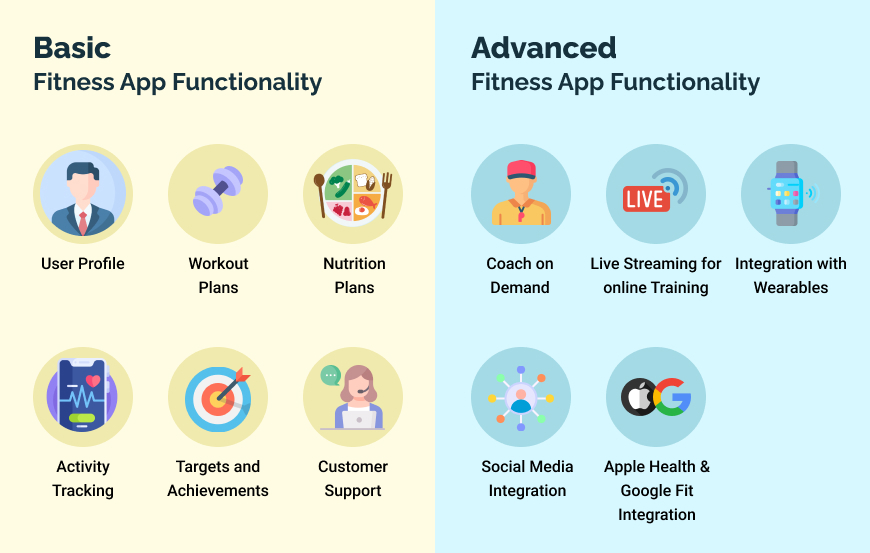
Also Read: Fitness App Development: A Comprehensive Guide
Top Health and Fitness App Development Trends in 2024
Fitness apps are constantly evolving to cater to users’ needs and keep them engaged. Here are some of the top health and fitness app development trends for 2024:
- AI-powered personalization: Fitness apps are leveraging Artificial Intelligence (AI) to provide users with personalized workout plans, nutrition advice, and progress tracking. AI can analyze a user’s data and goals to recommend the most effective exercises and adjust plans as needed.
- Advanced wearables integration: Fitness apps are seamlessly integrating with wearable devices like smartwatches and fitness trackers. This allows for more comprehensive data collection on activity levels, heart rate, sleep patterns, and more. This data can then be used to personalize workouts and track progress more accurately.
- Holistic wellness focus: Fitness apps are moving beyond just physical exercise and are starting to incorporate features that address mental and emotional well-being. This could include guided meditations, mindfulness exercises, and sleep tracking tools.
- Macro-based meal planning: Macro-based meal planning focuses on consuming the right proportions of carbohydrates, protein, and fat to achieve fitness goals. Fitness apps are incorporating features to help users create and track macro-based meal plans, ensuring they get the proper nutrients to fuel their workouts.
- Virtual and augmented reality (VR/AR) workouts: VR and AR are making their way into fitness apps, offering immersive and interactive workout experiences. Imagine working out in a virtual gym or running through a scenic trail – all from your living room!
- Prioritization of data privacy: With the increasing amount of personal data collected by fitness apps, data privacy is a major concern. App developers are focusing on building trust with users by implementing strong security measures and giving users more control over their data.
Wrapping Up
The 2024 fitness app development market is a bubbling pot of potential and innovation. Increasing demand for personalized, tech-driven fitness solutions is driving this growth.
For businesses and developers, staying ahead of these trends is important for creating compelling, effective fitness apps that meet the evolving needs of the users. Embracing these advancements is crucial not just for superior experiences but also to maintain the competitive edge in a rapidly growing market. Innovation is endless as technology advances further, and this new decade is sure to promise nothing less for the fitness industry.
For expert assistance in cutting-edge fitness app development, contact Resourcifi now.










